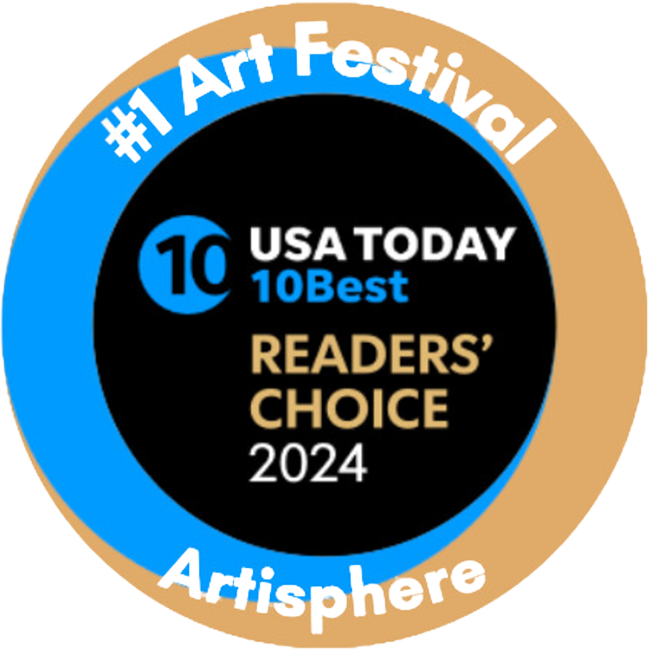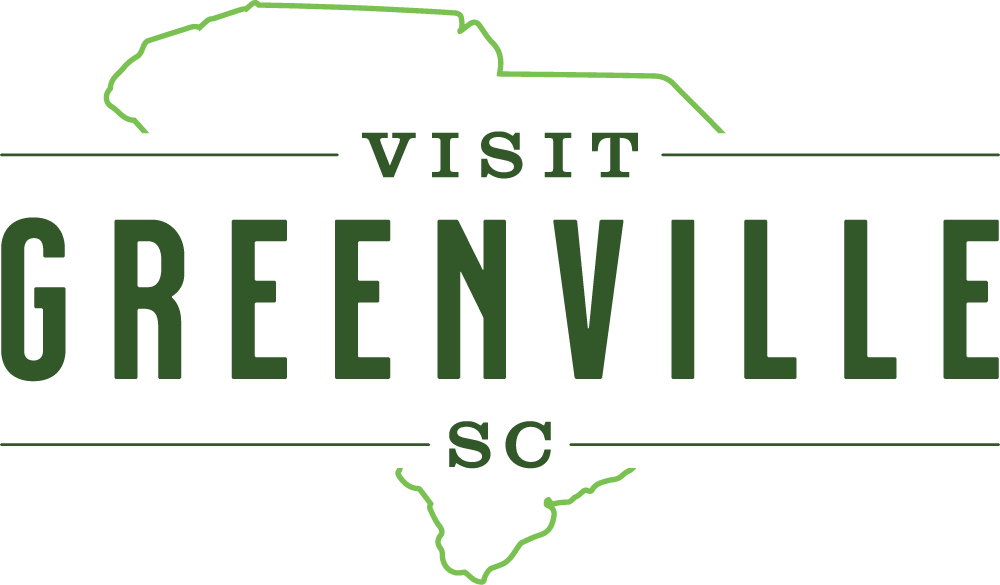Blessing Hancock is the designer and creator of the sculpture that has been dedicated to West Greenville for the 15th annual Artisphere presented by TD Bank !
In honor of our 15th anniversary, we asked Blessing 15 questions about art and Artisphere.
Q: What message do you aim to get across through your work?
A: I aim to expand the definition of art and help connect it to a greater audience. For me art offers a way forward for a culture and a society, there is no right or wrong way to approach it because each person is an individual, and each artist speaks from their own experience.
Q: Who/what has been the biggest influence on your work?
A: My early inspirations came from the Land Art movement of the 1960’s/early 70’s and artists such as Andy Goldsworthy, Robert Smithson, James Turrell and Nancy Holt. Even though I wasn’t alive during this period, I have a great interest in the natural environment and it has been a major inspiration for my work throughout the years. I remember reading a quote by James Turrell about art being ‘a place you go to empty out’, and this has stuck with me.
Q: What part of the creative process is most exciting to you?
A: I think of the creative process as a problem solving exercise, I’m tasked with creating an artwork that speaks of it’s surroundings. The most exciting part for me is when I feel a concept starts to relay this message.
Q: What has been your favorite experience working with Artisphere so far?
A: It’s has been a great pleasure working with Artisphere and the City of Greenville, my favorite part has been engaging the local community, especially during Artisphere 2018.
Q: What is a day in the studio like for you?
A: I keep my studio very small and quiet, with no employees. I think of it as a retreat and this allows me to work from home and keep my personal focus on the artwork designs and community engagement. I typically juggle about ten projects at one time, these are located throughout the world and appox 50% of my time is spent traveling. Engineering and fabrication gets done through phone and email communication with my subcontractors.
Q: What is the biggest change that you’ve noticed in your work since you began?
A: My early education in arts produced small-scale works, done in more traditional materials (bronze, clay, wood) through an additive, built-up process. Since starting in Public Art my sculptures have grown large and I primarily work with sheet goods (stainless steel, polycarbonate). My art changed dramatically when I began designing on the computer and working with structural engineers because gravity and scale were no longer limiting factors.
Q: What drew you to light as a medium as opposed to any other medium?
A: Light is a connective thread that runs through my work, and I believe in light’s ability to enhance and enliven a space. Light makes me happy and I also see how it affects others.
Q: How would you describe your work in 5 words?
A: Contemporary, interactive, large-scale, illuminated, sculptures
Q: What is your background in art and how has it affected your work?
A: I have a BFA in Sculpture and an MLA in Landscape Architecture. These two degrees are invaluable to me, the perfect combination of creative and practical that I need in the Public Art field. I have been working as a full time public artist since 2008.
Q: How long did it take for you to develop your own personal art style?
A: My entire life…and then some, there isn’t an answer that would suffice here because everything I have experienced up to this point has defined my style, and it will continue to change based on everything I experience after this point.
Q: What advice would you give to aspiring artists?
A: You probably know if you are interested in art from a very young age. If you are going to be a successful artist, it will likely feel like an obsession, something you can’t stop yourself from doing. I work on art everyday without exception.
Q: What do you love most about being an artist?
A: I appreciate the unconventional nature of being an artist. There aren’t really any rules about how you are supposed to be or act.
Q: What’s the most challenging part about being an artist?
A: Sometimes it can take over everything, to the point that I lose all perspective of the day-to-day. Wake…art…sleep…repeat, my goal is to find a balance with it.
Q: If you weren’t an artist, what would you be doing?
A: Puzzles
Q: What importance do the arts have in education?
A: The arts are an invaluable component to any educational curriculum. Learning how to think abstractly and from multiple perspectives is a key attribute that any successful adult possesses.


